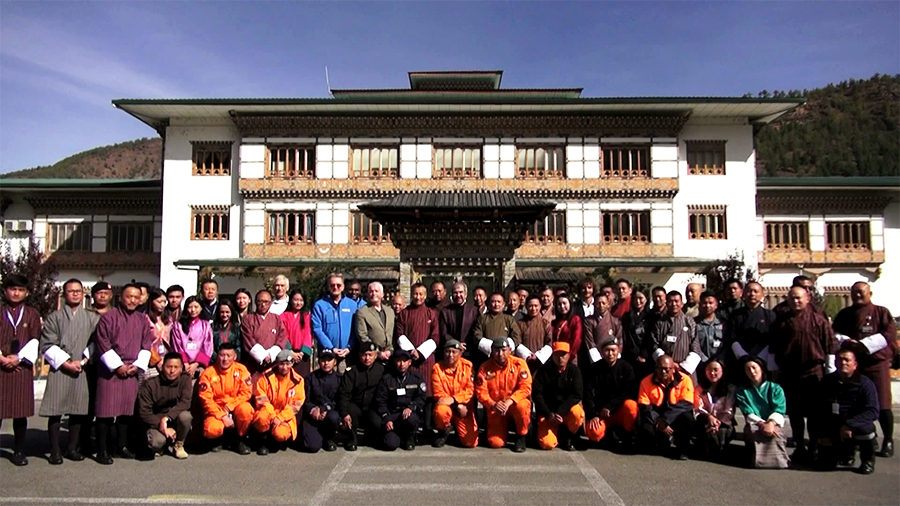
To better prepare the Paro International Airport as a logistical hub in the event of a disaster as well as integrate its role in national emergency plans, the airport had its first ever Get Airports Ready for Disaster or GARD Programme this week. As the airport is the only entry point by air in Bhutan, a country highly vulnerable to earthquakes and floods, organisers said it was critical to prepare it and its staff to handle humanitarian aid coming through during disasters.
 Situated in a narrow valley surrounded by mountains rising to over 5,000 meters, the Paro International Airport is recognised as one of the most dangerous airports in the world. Therefore, it is considered crucial to create a robust disaster resilience standard for the airport. This is where the GARD programme comes in.
Situated in a narrow valley surrounded by mountains rising to over 5,000 meters, the Paro International Airport is recognised as one of the most dangerous airports in the world. Therefore, it is considered crucial to create a robust disaster resilience standard for the airport. This is where the GARD programme comes in.
About 50 individuals from relevant national stakeholders attended the four-day event, which concluded yesterday. The GARD Program is a global public-private partnership aimed at supporting airports in planning for their role as logistical hubs during disasters such as floods, earthquakes, fires, and landslides, as well as incorporating the airport’s role in national emergency plans.
Ministry of Infrastructure and Transport’s Secretary Phuntsho Tobgay said, “we can think of seismic disaster in our context, where all road networks could be possibly impacted, where landslides could impact our roads, where institutions remain closed because infrastructure could get damaged. So in such a widespread disaster, we have to get international relief and support. So getting the airport ready for disaster will enable us to be prepared for such an event.”
The programme covered theory and practice, including assessing the airport’s maximum processing capacity for cargo and passengers. Discussions included how relief efforts would be coordinated during unfortunate calamities. Exercises were also carried out on identifying potential bottlenecks and how to expand the processing capacity in the event of an emergency.
The programme will also be carried out at Gelephu Domestic Airport, which is expected to be soon upgraded to an international airport. Infrastructure and system upgrades are being carried out as part of the process to certify the airport for international flights.
“The Gelephu Airport for instance will play a critical role in carrying out disaster relief in the country because when we talk about the widespread disaster, we cannot rely on just one airport. So from that perspective, a redundant airport for serving the country in terms of major disasters will be on a better position to handle that,” said Phuntsho Tobgay.
The programme was conducted as a joint initiative of the United Nations Development Programme, World Food Programme, International Federation of Air Traffic Controllers and the DHL Group with the support of Airports Council International Asia Pacific and Middle East. Among the stakeholders are the Department of Air Transport and the Department of Local Governance and Disaster Management as well.
Namgay Wangchuk, Paro
Edited by Kipchu









